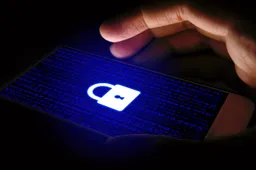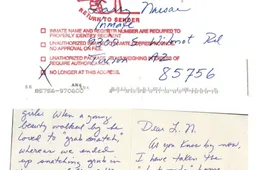
PCMagazine heeft nauwgezet de hoogte en dieptepunten benoemd in de geschiedenis van de PC. Die geschiedenis begon 30 jaar geleden met de IBM PC.
1981 August Don Estridge and team launch the IBM PC. A basic model with an Intel 8088 processor, 16K of memory, a 160K floppy disk drive, and an 11.5-inch black-and-white monitor costs $1,565. 1982 January PC Magazine is launched to serve the burgeoning IBM-compatible PC market and to inform its users. PCMag.com continues those traditions today. 1982 Columbia Data Products releases the Columbia MPC, the first IBM-compatible PC. 1982 Philips and Sony announce the compact digital audio format, using the Red Book standard. Audio CD players begin selling in Japan. 1982 MicroPro releases WordStar for PC-DOS, the first non-CP/M version of the program. 1982 Hayes introduces the Smartmodem 1200. 1982 February Compaq Computer Corp. is founded by Road Canion, Jim Harris, and Bill Murto. 1982 February Intel introduces the 80286 processor. 1982 April Mitch Kapor and Jonathan Sachs form Lotus Development Corp. 1982 November The Compaq Portable, the first IBM-compatible luggable computer, weighs in at 28 pounds. It has a 4.77-MHz Intel 8088 processor, 128K of RAM, a 320K floppy disk drive, and a 9-inch black-and-white monitor. Price: $2,995. 1983 IBM introduces the PC XT. For $4,995, customers get a machine with an Intel 8088 processor, 128K of RAM, a 360K floppy disk drive, a 10MB hard drive, and a 12.5-inch monitor. 1983 January Apple Computer introduces the Lisa, a precursor of the Macintosh and one of the first machines with a graphical user interface. It is a commercial failure, in part because its $9,995 price tag scares off buyers. 1983 January Instead of nominating a Person of the Year in its January 3 issue, TIME names the computer the 1982 Machine of the Year. 1983 January Lotus 1-2-3 1.0 ships 1983 March Microsoft introduces MS-DOS 2.0. 1983 Software Systems introduces MultiMate, a PC word processing system that emulates a dedicated Wang word processor. 1983 Satellite Software Int'l (renamed WordPerfect Corp.) introduces WordPerfect. 1983 September Microsoft introduces Word for MS-DOS 1.0. 1984 August IBM introduces the PC AT. It has a 6-MHz 80286 chip, 512K of RAM, a 1.2 MB floppy disk drive, a 20MB hard drive, and a 12.5-inch monitor and costs about $5,800. 1984 Apple runs its famous 1984 commercial during Super Bowl XVIII. Two days later it officially introduces the Macintosh, with a Motorola 68000 processor, 128K of RAM, a 3.5-inch floppy disk drive, and a built-in 9-inch screen. Price: $2,495. 1984 The number of Internet hosts reaches 1,000. 1984 Hewlett-Packard introduces the HP LaserJet. 1984 William Gibson's cyberpunk classic LNeuromancer introduces the term "cyberspace." 1985 November Microsoft releases Windows 1.0. 1985 March Symbolics.com becomes the first registered commercial domain name. 1985 October Intel introduces the 386DX processor. 1985 Aldus introduces PageMaker, which signals the start of desktop publishing. 1985 The first CD-Rom drives hit the market. 1985 America Online is founded by Steve Case, Jim Kinsey, and Marc Seriff. 1986 September Compaq introduces the Compaq Deskpro 386, the first 80386-based PC. A 16-MHz machine with 1MB of RAM, a 1.2MB floppy disk drive, a 40MB hard drive, and a 12-inch monitor costs $7,900. 1987 December Microsoft releases Windows/386. 1988 October Steve Jobs announces the NeXT Computer. It is another year before the machine starts shipping. 1988 Hayes introduces the Smartmodem 9600. 1988 November The Internet Worm is released, consuming an enormous amount of computing power and bringing down thousands of Internet hosts. 1989 March At CERN, Tim Berner-Lee circulates his original proposal for the World Wide Web ("Information Management: A Proposal"). 1989 The number of Internet hosts reaches 100,000. 1989 April Intel introduces the 486DX processor. 1990 May Microsoft announces Windows 3.0. 1990 The first 486-based PCs hit the market. For about $6,000, you can get a 25-MHz system with 4MB of RAM, a 150MB hard drive, 1.2Mb and 1.44MB floppy disk drives, and a 14-inch monitor. 1991 Linus Torvalds starts developing Linux, a Unix-like operating system designed to run on PCs. 1991 Apple introduces the PowerBook 100, 140, and 170. Today's laptops continue follow their styling and ergonomic cues. 1991 CERN launches the World Wide Web. 1992 Palm Computing is founded. 1992 IBM introduces the ThinkPad 700 series, laying the groundwork for the business laptop. 1992 The number of Internet hosts reaches 1,000,000. 1992 April Microsoft releases Windows 3.1. 1993 November NCSA releases Version 1.0 of the Web browser Mosaic. 1993 March Intel introduces the Pentium processor. 1993 The first Pentium-based PCs hit the market. For about $5,000, you can get a 66-MHz system with 16MB of RAM, a 340MB hard drive, a 1.44MB floppy disk drive, and a 15-inch monitor. 1994 Stanford Ph.D. candidates David Filo and Jerry Yang put together a little Web site to help keep track of Internet resources. They decide to call it Yahoo! 1994 March Marc Andreessen and six other members of the original Mosaic team leave NCSA and join Silicon Graphics founder Jim Clark to form Mosaic Communications Corp. They later rename the company Netscape Communications. 1994 October Mosaic Communications releases the first beta version of the network navigator Mosaic Netscape. 1995 July Amazon.com is founded. 1995 September eBay is founded. 1995 August Microsoft releases Windows 95. 1995 November Intel introduces the Pentium Pro processor. 1995 December Two rival groups of companies, headed by Toshiba on one side and Philips and Sony on the other, work out their differences and announce a consensus for the DVD format. 1996 Palm introduces the first Palm OS device, the Pilot 1000 and the Pilot 5000. 1996 The number of Internet hosts reaches 10,000,000. 1996 High-speed Internet access via cable modem becomes available. 1997 After much wrangling over copyright protection issues, the first DVD video players hit the U.S. market. 1997 May In a dramatic reversal of their battle the previous year, IBM's Deep Blue supercomputer beats chess master Garry Kasparov in a six-game match. 1997 Intel introduces the Pentium II processor. 1997 September Steve Jobs returns to Apple as interim CEO (iCEO) after leaving to form NeXT in 1985 and Pixar Animation Studios in 1986. In 2000 he officially becomes CEO. 1997 The first Pentium II PCs hit the market. A 233-MHz machine with 64MB of RAM, a 4GB hard drive, a 1.44MB floppy disk drive, a CD-Rom drive, and a 17-inch monitor costs about $4,000. 1998 August Apple makes a splash with its Bondi Blue iMac. For about $1,300, customers get a machine with a 233-MHz G3 processor, a 4GB hard drive, 32MB of RAM, a CD-ROM drive, and a 15-inch monitor. 1998 June Compaq completes is acquisition of Digital Equipment Corp. 1998 June Microsoft releases Windows 98. 1998 Sergey Brin and Larry Page incorporate Google.com. Google started while they were PhD candidates at Stanford. 1999 February Intel introduces the Pentium III processor. 1999 The first Pentium III-based PCs become available. A 500-MHz system comes with 128MB of RAM, a 20GB hard drive, an Iomega Zip Drive, a DVD drive, and a 19-inch monitor. 1999 March AOL buys Netscape. 2000 The much-hyped Y2K bug turns out to be a dud. 2000 The ILOVEYOU virus is successful at becoming the most prolific computer virus. 2000 Windows ships Windows 2000. 2000 AMD Ships the first 1GHz processor: the AMD Athlon. 2000 November intel introduces the Pentium 4 processor. For about $2,500 you can get a 1.5-GHz system with a 128MB of RAM, a 40GB hard drive, a CD-RW drive, a DVD drive, and a 19-inch monitor. 2001 January AOL buys Time Warner. 2001 January The number of Internet hosts reaches 100,000,000. 2001 The Wikipedia Project starts 2001 March Mac OS X 10.0 is released 2001 October Windows XP is released 2002 March RIM introduces the first Blackberry, making 24/7 email portable for business users. 2002 HP acquires Compaq. 2003 Nvidia GeForce FX introduces DX9 to the 3D vernacular. Many of today's games still use DX9. 2003 March Intel ships the Pentium M 2003 Sept AMD introduces the Athlon 64, the first 64-bit CPU for consumers and business users. 2004 Ubuntu Linux ships its first distribution 2004 Mozilla introduces the world to FireFox 2004 Apple intros the iMac G5 which influences today's all-in-one desktop design. 2004 Mark Zuckerberg develops Facebook. Initially made for Harvard students, it eventually becomes the number one social media site. 2004 Gateway acquires eMachines. 2005 Intel intros the Pentium D (Dual core processor) 2005 AMD counters with the Athlon 64 X2 Dual core processor 2005 You Tube hosts its first video 2005 Lenovo buys IBM's personal computer division 2005 Apple intros the Mac mini: the compact desktop goes mainstream 2005 Microsoft introduces the Xbox 360: a console with better graphics than many gaming PCs. 2006 Intel introduces the Core brand, followed by the Intel Core 2 Solo and Duo processors 2006 The Apple MacBook Pro is the first Apple product with an Intel processor instead of the Motorola/IBM-developed PowerPC processor. 2006 Sony Intros Playstation 3. It comes with even better graphics, and a Blu-ray drive. 2006 Nintendo's Wii becomes the must-have gadget. Nintendo can't keep them on the store shelves for three years. The motion control system is the decade's hottest innovation for gaming. 2006 Microsoft's Zune contests Apple's iPod dominance (and fails). 2006 Twitter incorporates, (first known as twttr). 2006 Dell purchases Alienware, a builder of high end gaming PCs. 2006 HP purchases VoodooPC, a builder of high end gaming PCs. 2006 Blu-ray and HD-DVD duke it out for hi-def dominance. 2006 OLPC (One Laptop Per Child) and its buzz popularize the concept of a very, very inexpensive PC. Initial pricing for the XO-1 was forecast at $100, but it ships later in 2007 for $199. 2007 Apple's iPhone introduces the smartphone to the masses. Camping for the launch becomes a media sensation. 2007 Microsoft ships Vista, the replacement for Windows XP 2007 Asus' Eee PC is the first nettop shipped. The Eee PC 701 goes for $199. 2007 Hulu starts rebroadcasting TV programming on your PC. 2007 Acer acquires Gateway. 2008 Google introduces the Android smartphone OS. 2008 The HTC Dream (T-mobile G1) becomes the first Android phone. 2008 The Hi-def wars are over, Blu-ray defeats HD-DVD in the marketplace. 2008 Netflix starts streaming movies on demand to PCs with Instant View. 2008 Google intros a new browser: Chrome 2009 Microsoft ships Windows 7, replacing Vista. You can still buy a PC with Windows XP on it. 2009 Microsoft introduces Bing, their take on a search engine ("decision engine") 2010 Apple's iPad redefines mobile computing 2010 Microsoft announces Windows 7 Phone 2011 IBM's Watson supercomputer defeats two former Jeopardy champions in a real-speech input driven battle royale. 2011 Intel's Sandy Bridge (Second Generation Core) brings supercomputing power to the desktop and laptop. 2011 August The original IBM PC model 5150 turns 30 years old.
Bron(nen): PC Magazine
POPULAIR NIEUWS

Hoe “de Russen” al in je telefoon zitten – zonder dat je het merkt

Wordt dit Epstein-briefje Trump fataal?

Waarom je te veel betaalt: huismerk en A-merk komen vaak uit dezelfde fabriek

"Ik wil zoveel mogelijk Joden doden en rivieren van hun onzuiver bloed laten stromen"

De absurde foto van Jake Paul met wapens en geld laat zien dat Jutta een merkwaardige verloofde heeft

Waarom je moet oppassen met te veel Omega-3
Loading